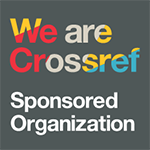Методы и средства измерения внешних воздействий на основе волоконно-оптических интерферометров
DOI:
https://doi.org/10.33408/2519-237X.2019.3-1.5Ключевые слова:
волоконно-оптический интерферометр Майкельсона, деформация, щелевой волновод, жидкий кристалл, кольцевой резонатор, напряженность электрического поляАннотация
Предложены конструкции и принципы функционирования датчиков для измерения величины и направления деформаций измеряемых объектов и определения напряженности электрического поля. Векторный датчик на основе волоконных интерферометров позволяет измерять величину и направление деформаций и смещений измеряемых объектов. Диапазон измерения достигает 5 мм, точность определяется шагом перемещения сканирующего зеркала и на используемой элементной базе составила 10 мкм. Датчик на основе микрокольцевых резонаторов на базе щелевых волноводов, заполненных ЖК, позволяет измерять напряженность электрических полей в диапазоне от 10 до 3×106 В/м с точностью до 1 В/м. Быстродействие датчика ограничено временем отклика ЖК и варьируется от десятков до сотен микросекунд, что позволяет измерять с его помощью переменные электрические поля с частотами до десятков кГц.
Библиографические ссылки
Garmash V.B., Egorov F.A., Kolomiets L.N., Neugodnikov A.P., Pospelov V.I. Vozmozhnosti, zadachi i perspektivy volokonno-opticheskikh izmeritel'nykh sistem v sovremennom priborostroenii [Possibilities, tasks and perspectives of fiber-optic measuring systems in modern instrument engineering]. Foton-ekspress. Nauka, 2005. No. 6. Pp. 128–140. (rus)
Passaro V.M.N., Dell’Olio F., De Leonardis F. Electromagnetic field photonic sensors. Progress in Quantum Electronics, 2006. Vol. 30. Pp. 45–73.
Li L. et al. All-fiber Mach-Zehnder interferometers for sensing applications. Optics Express, 2012. Vol. 20, No. 10. Pp. 11109–11120.
Thurner K. et al. Fiber-based distance sensing interferometry. Applied Optics, 2015. Vol. 54, No. 10. Pp. 3051–3063.
Barrios C.A. et al. Label-free optical biosensing with slotwaveguides. Optics Letters, 2008. Vol. 33, No. 7. Pp. 708–710.
Dell’Olio F., PassaroV.M. Optical sensing by optimized silicon slot waveguides. Optics Express, 2007. Vol. 15, No. 8. Pp. 4977–4993.
Kargar A., Chao C.Y. Design and optimization of waveguide sensitivity in slot microring. J. Opt. Soc. Am. A, 2011. Vol. 28, No. 4. Pp. 596–603.
Ibrahim T.A., Cao W., Kim Y. Lightwave switching in semiconductor microring devices by free carrier injection. J. Lightwave Technol, 2003. Vol. 21. Pp. 2997–3002.
Goncharenko I., Marciniak M., Reabtsev V. Electric field sensing with liquid-crystal-filled slot waveguide microring resonators. Applied Optics, 2017. Vol. 56. Pp. 7629–7635.
Shenoy M.R., Sharma M., Sinha A. An electrically-controlled nematic liquid crystal core waveguide with a low switching threshold. Journal of Lightwave Technology, 2015. Vol. 33, No. 10. Pp. 1948–1953.
Yeh P., Gu C. Optics of Liquid Crystal Displays. 2nd ed. Hoboken, NJ, USA: Wiley, 2009. Pp. 21–47.
Опубликован
Как цитировать
Лицензия
Все права защищены (c) 2019 Рябцев В.Н., Гончаренко И.А., Ильюшонок А.В.
CC «Attribution-NonCommercial» («Атрибуция — Некоммерческое использование») 4.0




















